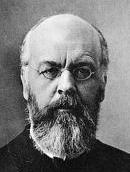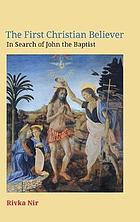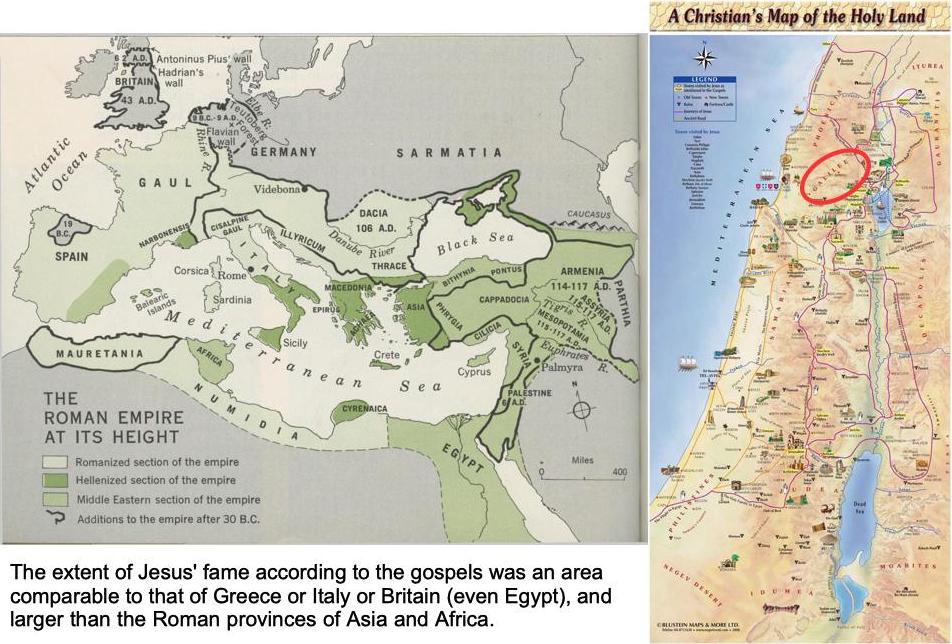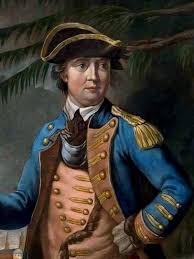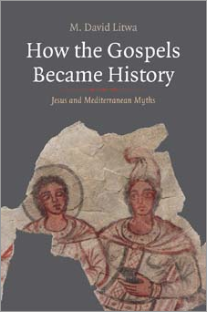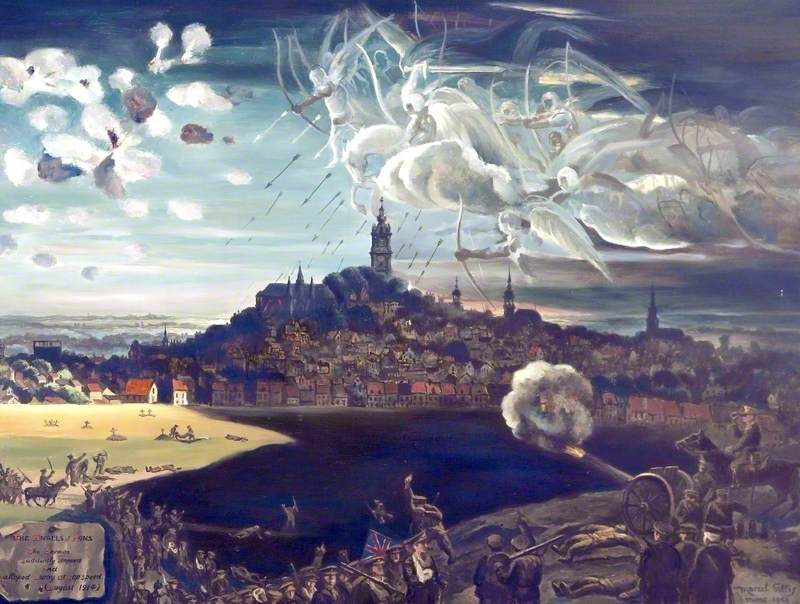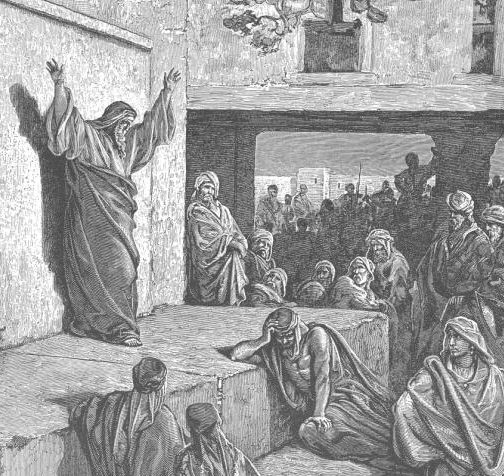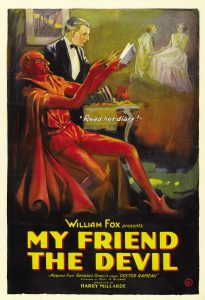Continuing Rivka Nir’s case for questioning the authenticity of John the Baptist in Josephus’s Antiquities…. (First post is here.)
Nir informs us in The First Christian Believer,
By the nineteenth and early twentieth century, historians were suggesting that this passage was a Christian interpolation. (p. 42)
As a general rule, I like to follow up and check the grounds for statements like that. For readers who also would like to know who these early historians were and what they actually said I post here quotations from the sources cited by Rivka Nir.
This sentence translates as…
Meanwhile, the point is easily settled. Josephus’s narrative [account] about John [the Baptist], his capture and his death (das. 2, 2), is a brazen interpolation like that about Jesus (das. 3, 3), which is has now generally come to be viewed as a forgery.
Graetz, Heinrich. “Von dem Tode Juda Makkabi’s zum Untergange des judäische Staates.” In Geschichte der Juden : von den ältesten Zeiten bis auf die Gegenwart, 3:278 (note 3). Leipzig, Leiner, 1888. https://archive.org/details/geschichtederjud03grae/page/276/mode/2up.
-o-
Translation:
The question of the authenticity of the Johannes passage in Josephus has not yet been definitively answered; it is at any rate suspect.
Krauss, Samuel. Das Leben Jesu nach jüdischen Quellen. Berlin: Georg Olms, 1902. p. 257 https://books.google.com.au/books?id=Tu9dpJx1M2oC&printsec=frontcover#v=onepage&q&f=false.
-o-
Next is that passage I asked for help to translate.
Die Echtheit der Josephusstelle ist nur selten angefochten worden (auch Volkmar setzt sie ohne weiteres voraus ; gegen dieselbe : J . Chr . K . v . Hofmann , Die heil . Schrift Neuen Testaments , VII . Thl . 3 . Abth . Der Brief Jakobi 1876 , S . 4 f . ) Zu ihren Gunsten spricht allerdings, dass die Motive für die Gefangensetzung und Hinrichtung des Täuters so ganz anders angegeben werden als in den Evangelien. Da aber Josephus an anderen Stellen sicher von christlicher Hand interpolirt worden ist, so darf man auch hier nicht allzusehr auf die Echtheit vertrauen. Bedenken erweckt namentlich das günstige Urtheil über Johannes, der doch nur nach gewissen Seiten hin dem Josephus sympathisch sein konnte, nämlich als Asket und Moralprediger, aber nicht als der das Volk mächtig aufregende Prophet des kommenden Messias.
Translation with thanks to all those who contributed via email, Facebook and this blog.
The authenticity of the Josephus passage has only seldom been challenged (Volkmar also assumes it without further ado; against the same: J. Chr. K. v. Hofmann, Die heil .schrift Neuen Testaments, VII. Thl. 3rd Abth Der Brief Jakobi 1876, p. 4 f.) In their favor, however, the fact that the motives for the imprisonment and order of the masters are given so completely differently than in the Gospels. But since Josephus was certainly interpolated by a Christian hand in other passages, one should not trust too much in the authenticity here either. The favorable judgment about John arouses concern, who is only sympathetic to Josephus in certain respects could, namely as an ascetic and moral preacher, but not as the prophet of the coming Messiah, who might excite the people.
Schürer, Emil. Geschichte des jüdischen Volkes im Zeitalter Jesu Christi: Einleitung und politische Geschichte. Vol. 1.364 (note 24). J. C. Hinrichs, 1890.https://play.google.com/books/reader?id=KMTIX-nJwusC&hl=en&pg=GBS.PA364
Rivka Nir stated that Schürer thought Josephus’s positive attitude towards John was suspicious. But when I read the revised English translation of Schürer’s volume I met a different conclusion:
The passage of Josephus was known to Origen (c. Cels. I, 47). Eusebius quotes it in full (HE i 11, 4-6; DE ix 5, 15). Its genuineness is rarely disputed. In its favour is the fact that the motives for the imprisonment and execution of the Baptist are entirely different from the Gospel version. But since the text of Josephus has certainly been retouched by Christian scribes in other passages, the theory of an interpolation cannot be absolutely excluded. Suspicion is aroused by the favourable verdict on John, but against this it should be borne in mind that as an ascetic and moral preacher, he might have been viewed sympathetically by Josephus.
Schürer, Emil. The History of the Jewish People in the Age of Jesus Christ, Vol. 1. Revised and edited by Geza Vermes & Fergus Millar. Edinburgh: T&T Clark, 1973. p. 346 https://books.google.com.au/books?redir_esc=y&id=p75tWhrwGT8C&q=known+to+Origen#v=onepage&q&f=false
Vermes and Millar introduce an emphatic statement that Origen knew the passage in Josephus about John the Baptist, yet Origen’s testimony is ambiguous at best as we saw in the previous post.
Vermes/Millar further make the positive suggestion that “the theory of an interpolation cannot be absolutely excluded” but the intent of the original words is in fact negative according to the several translations generously offered by those who responded to my request:
- given that other passages in Josephus were doubtless interpolated by Christian hands, one cannot place blind trust in authenticity.
- since Josephus is interpolated by Christian hand in other places, one cannot trust its authenticity all too much in this case
- one can’t completely trust this translation either (as it was influenced by a Christian perspective)
- since Josephus was certainly interpolated by Christians (a Christian hand) in other places, one should not trust too much in the authenticity here either
- since Josephus has clearly been interpolated in other places, one must not be altogether trusting of the genuineness of this passage
The Vermes/Millar revision presents an opposite idea, leading readers to think that, “Okay, theoretically there is some small chance it is an interpolation”; while other translations suggest, “Given what we know of Christian editing elsewhere we need to be cautious and not be too quick to assume authenticity here.” Continue reading “Early Thoughts on Authenticity of the John the Baptist Passage in Josephus”



